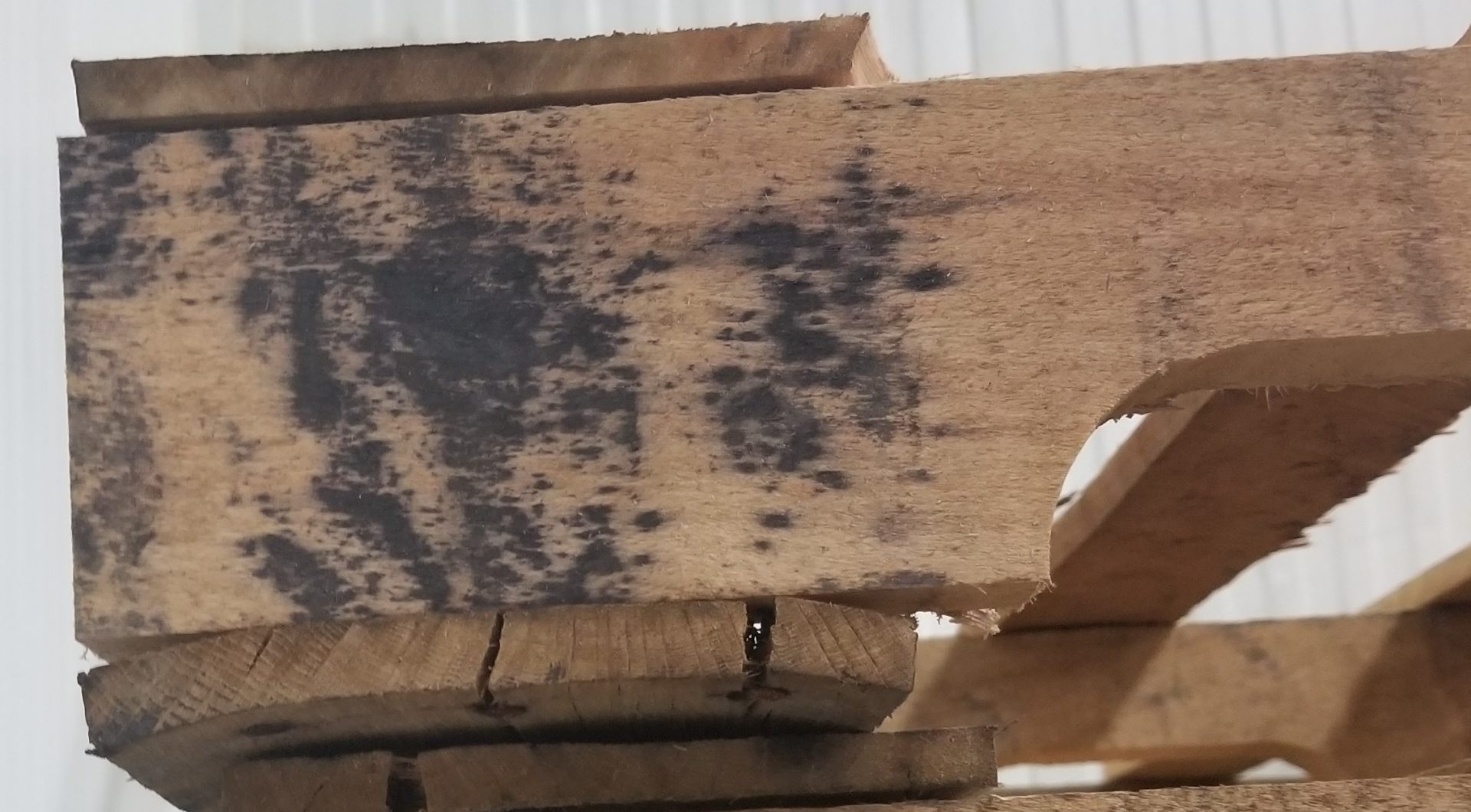ARE MY WOOD PALLETS MOLDY?
Wood Pallets Discolorations
Wood is the most common and cost-effective material used to build pallets. It is recyclable and renewable. A good way to think about trees used for wood packaging is that they’re a crop, like corn or wheat. The crop cycle is longer for trees used in wood packaging, but US lumber producers replant what they harvest so that the next cycle of “crops” is ready to replenish the lumber pool. Although this crop cycle doesn’t begin and finish yearly it’s still the same concept.
Since wood packaging comes from trees there are natural variations in the material. From different species like hardwood versus softwood, there are different types of hardwoods and softwoods. Drilling down further reveals that different types of wood species have unique appearances and react individually with their environment. Some of these reactions can appear to be mold.
Molds
Mold, in general, refers to fungi that grow both indoors and outdoors. The number of different types of mold is unknown but is estimated to be in the tens or even hundreds of thousands. In general molds like humid and warm environments in which to thrive.
While wood that is green, i.e., still containing some of the moisture from the living tree can present a source for mold growth, not all discolorations found on wood pallets are caused by mold or fungi. An example of a hardwood pallet with discoloration is shown on the right:
While that picture shows what looks like mold, it is actually a type of staining that occurs in some hardwoods. The above picture shows an example of an iron stain, a common discoloration that occurs when naturally occurring chemicals in the wood react with metal-containing iron, e.g., steel. Premier’s nailing machines and saws often can cause iron stain as the wood is processed and built into pallets. It is important to note that iron stain poses no health risks whatsoever and is just one example of a blemish that at first glance appears to be mold.
Other similar discolorations like a brown stain, zebra stain, or blue stain pose no health risks and can be mistaken for mold. Premier Pallets’ professionals can determine whether the mold is an issue or not on your wood pallets. In addition, steps can be taken to mitigate mold growth on pallets. Contact Us for more information.
Excellent quality and service. Prompt and reliable.
- Tim M.

